June is the lush month. June is the jungle month, particularly toward the end. The days are at their longest and they are warm, so the garden begins to look verdant and tangled in a most wonderful way. Squash vines overtake your walking paths. Corn stalks tower overhead. Cherry tomato plants drip with red fruit. Cucumber and beans climb up their cages and strings (pictured above).
I make sure to take pictures of my garden around the solstice in late June since it never looks more bountiful.
But there’s also a sense of urgency this month. It is your last chance to plant most of those warm-season vegetables. Put them in now or they won’t have enough time in the heat of summer to mature as large a crop. (The main exceptions are corn and beans, which can be successfully planted in July.)
Below are details on doings in the vegetable garden, some fruit tree thoughts, and a few other uniquely June opportunities:
Sow and plant
– Sow or plant these vegetables: basil, beans, corn, cucumber, sweet potato, tomatillo, chard, chives
– Plant seedlings of these vegetables: eggplant, pepper, melon, pumpkin, squash, tomato; if seeds of these vegetables are sown in June, especially later in the month, there’s a real risk of only getting a small crop before it cools too much at the end of the year since they take a long time to grow from seed to harvestable fruit
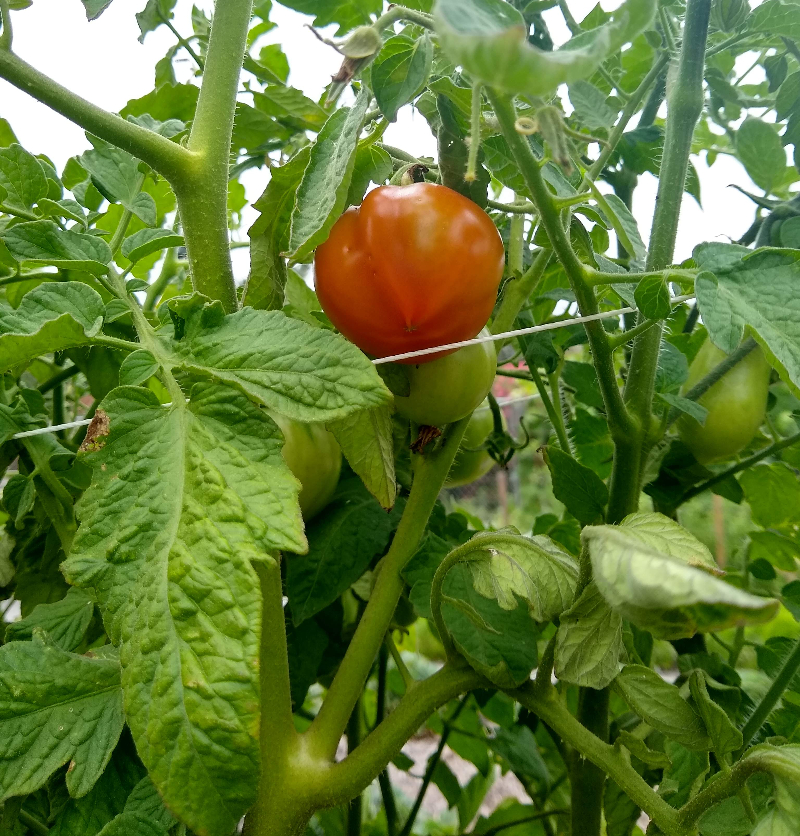
– Be aware of planting cilantro: sorry to rain on your salsa parade, but cilantro is not well-suited to growing in the summer in Southern California; you’d think it would grow well with other salsa ingredients like tomatoes and peppers, but it won’t; it will start to flower fast because of the warm weather so don’t expect an extended harvest; cilantro grows more slowly and harvests longer in the cooler weather of fall, winter, and early spring
– Sow or plant pole beans to be used as temporary, summer shade on east- or west-facing walls or windows by growing them up strings under an eave; you can also use grapes for the purpose of shading a house
– Consider growing your own Halloween pumpkins and decorative fall corn; now’s the time to plant those in order to harvest by late October; most years, I grow the colorful corn variety called Glass Gem, which I posted photos of here
– Plant avocado and citrus trees; they feel right at home in the warmth of late spring and early summer and soon prove it to you with a flush of new leaves, which gives you an immediate sense of success that you won’t get when planting in most of the rest of the year; if you plant an avocado, be sure to water it properly in it’s first few months: see my post “How to water a new avocado tree”
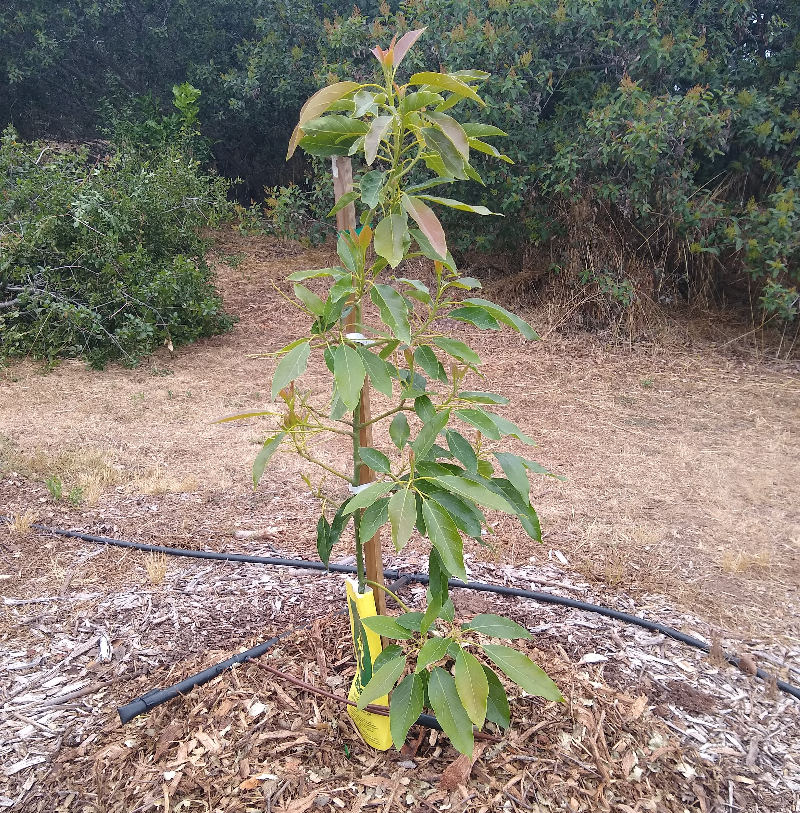
Harvest and eat vegetables
– Harvest these vegetables and grains (had you planted them in the fall/winter): potatoes, onion, garlic, wheat, fava beans
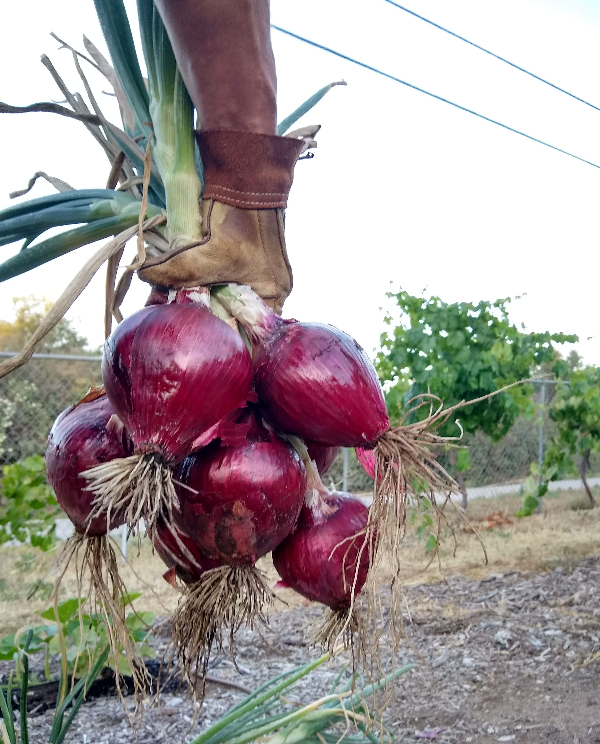

– Harvest these vegetables (had you planted them in the winter/spring): tomatoes, tomatillos,, corn, greens, broccoli, peas, lettuce, beets, carrots, peppers, cabbage, zucchini
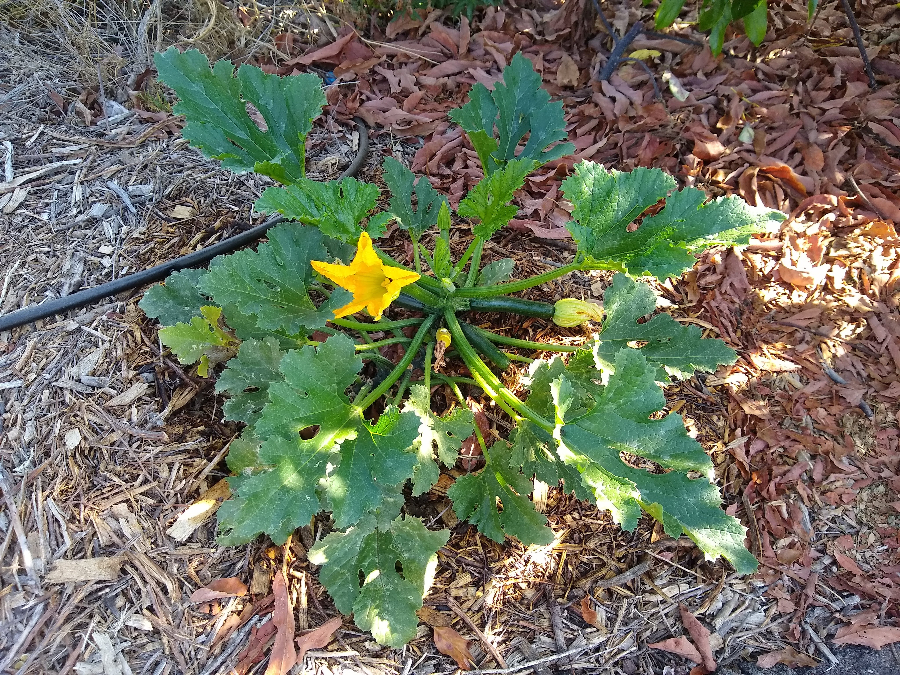
– Don’t fret over tomatoes that have blossom end rot (rotten bottom of the fruit); it happens often to the first fruits of May and June but not to the later fruits of summer; it also happens to certain varieties (e.g. San Marzano); there’s nothing you can do about it despite what someone selling a product might claim (it’s just a symptom of the cooler weather of spring/early summer); incidentally, if you do apply a product for blossom end rot this month, you’ll find that — voila! — it works: the placebo effect
Harvest and eat fruit
– Eat these berries and fruits (had you planted them): blueberries, strawberries, raspberries, blackberries, avocados (Hass, Cadway, GEM, Gwen, Luna), Valencia oranges, lemons and limes, Pixie and Gold Nugget mandarins, cherries (Lapins, Brooks), apricots, early peaches and nectarines, plums, passion fruit, pineapple guava flowers

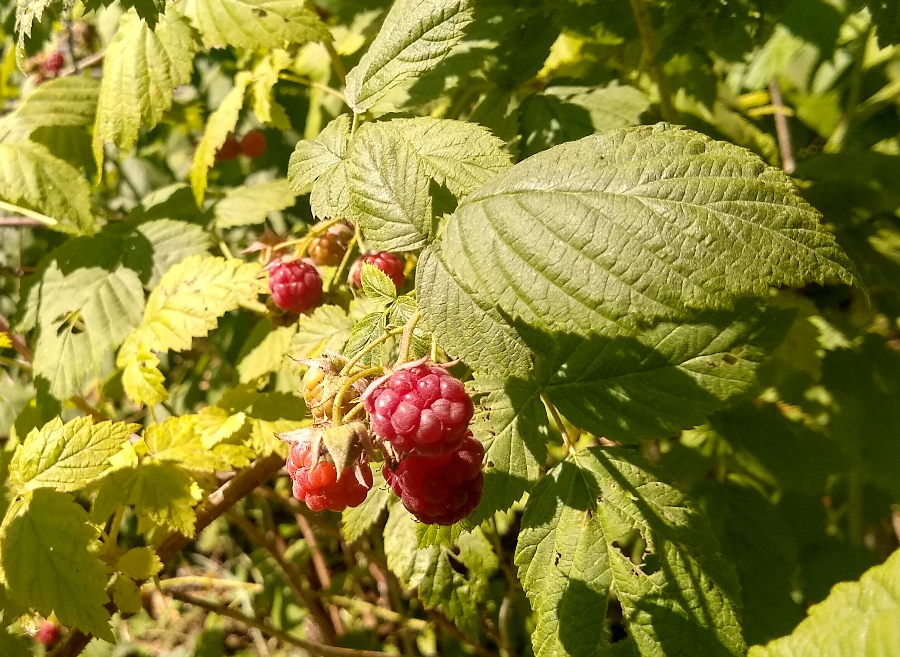
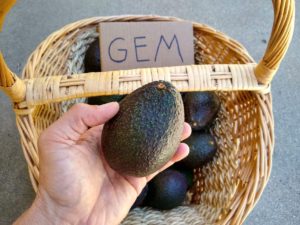
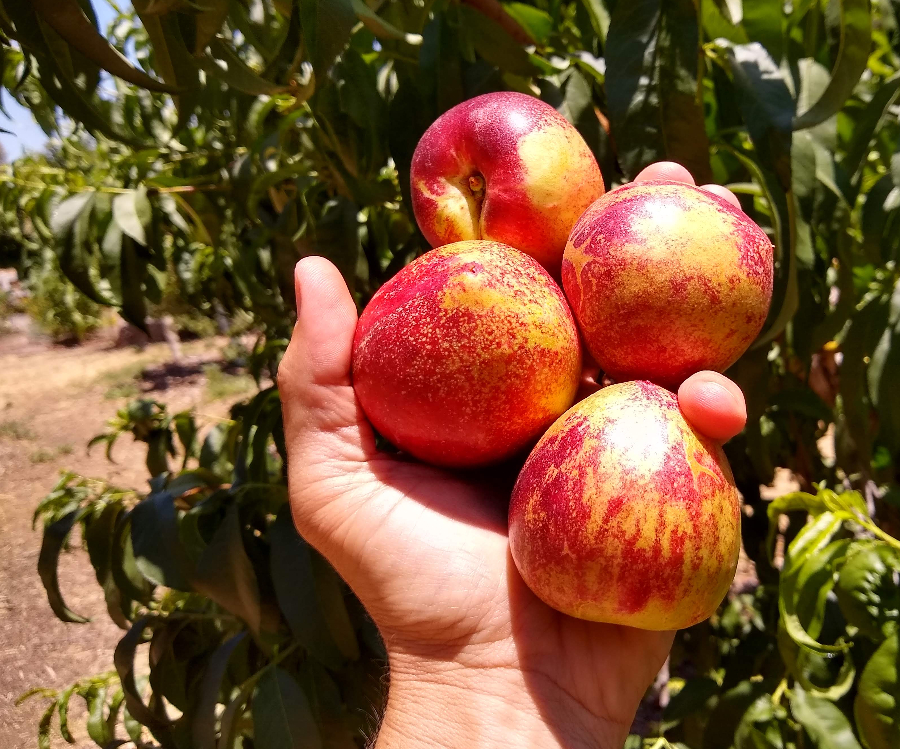
(Why do I mention what you could be harvesting and eating? So you can plan. If you want to be harvesting tomatoes next June, then plant them next March. If you want to be eating avocados from your yard in June, then plant a Hass or GEM or Gwen tree.)
Miscellaneous
– Get some chicks; it’s warm enough at night now so they’ll be comfortable outside at a very young age; “Should you get chickens?”

– Water plants for “thrival” not mere survival; don’t make the mistake that I have in some past summers of being stingy with water on vegetables and fruit trees, which lowers production and defeats the point; if you scratch into the dirt around the roots of your plants, you’ll know for sure how much water they have access to, as I wrote about in this post; also see, “How much to water a fruit tree in Southern California, roughly”; and “My watering schedules for vegetables and fruit trees”
– Have a realistic understanding of avocado fruit drop; you see small fruit forming on your tree in June and then many fall off; check out my post: “Avocado fruit drop: Why? When? How many?”
– Appreciate and observe the summer solstice (around June 20): Have a late dinner out in the yard while you notice where the sun sets — isn’t it fascinating how far northwest it falls below the horizon on this day? Or perhaps more challenging, wake at sunrise and notice how northeast it appears.
All of my Yard Posts are listed HERE
Thanks to the Supporters, this website has no ads disrupting your reading experience or influencing its content. Learn how you can support The Yard Posts HERE

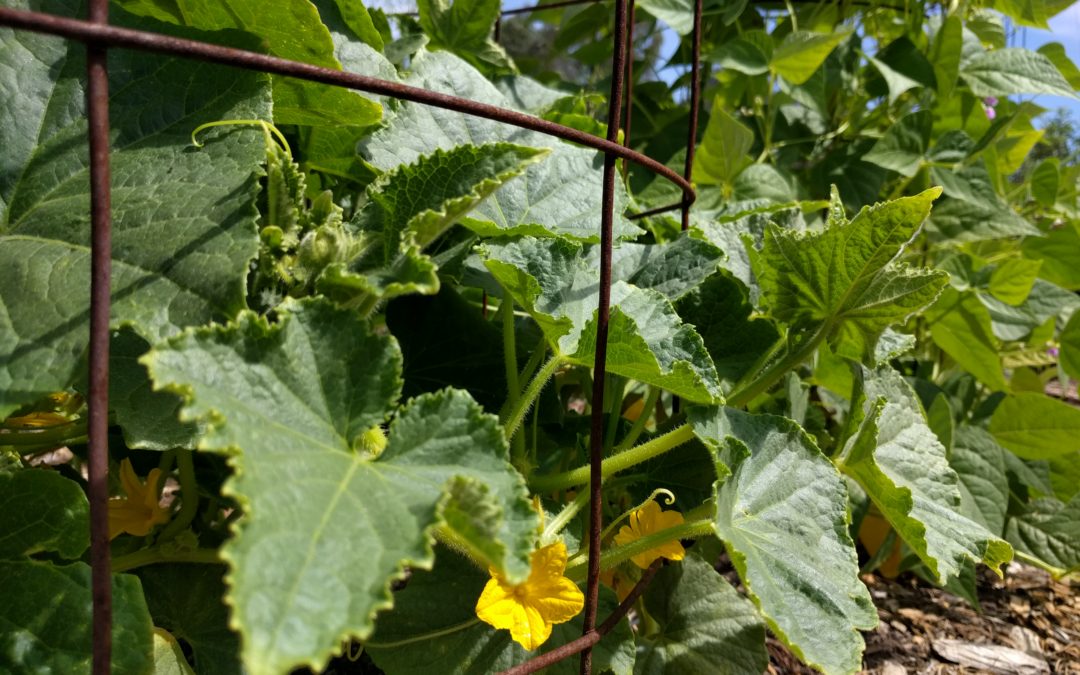


This is making me wish I had planted earlier! This is a great article to help me plan for next year!
Thanks, Renee. My goal with these Month by Month posts is just that: to make it easier for you to plan. For the most part, the contents of the Month by Month posts come from boiling down the reams of notes I’ve kept over the years, which have helped me plan.
I have a kumquat tree in a pot. It was flowering beautifully a few weeks ago. Now, it looks as though something ate all of the blooms. Every single flower! Would you know what could do that and will the flowers ever bloom again? Thank you!
Hi Dina,
Sorry about your kumquat blossoms. Are they munched or have they vanished entirely? Once they have been pollinated, the petals do fall and the tiny fruit starts to grow. Do you see any tiny green/yellow balls where the flowers had been?
There is usually one main bloom season with kumquats and most other citrus. So you might have to wait until next year for the next bloom, but sometimes trees will flower a bit more after the main bloom is done. My Valencia orange tree is having a bit of extra, late bloom right now.
My experience with tomato end rot in 2019. I’ve planted lots of trees that shaded my usual spot for tomatoes, so I dug a spot on the top of my postage stamp size lot where it is very sunny. I dug out a spot about 2’x8′ for 4 tomato plants. I put in bags of steer and horse manure and grow mulch. I ran an irrigation line to 4 circles made with plastic border and used drip lines to each one. I drove a pipe into the ground to hold a tomato cage for each circle and planted Betterboy variety tomato plants as I do each year. I had an extra plant, so I planted that one next to my deck. The plants grew fast and soon had green tomatoes, but as they ripened they had the end rot. I sprayed with a fungicide thinking that was the problem. It did not help. Then I happened to notice that all 4 plants had tomatoes with end rot, but the one I planted next to the deck had ripe tomatoes with no end rot. I did the research and found that the tomato end rot was not from a fungus, but from a lack of calcium in the soil. Wow! an easy solution if that is correct information. So, after my pathetic tomato season was over I dug, into the soil, another bad of steer manure along with bone meal and gypsum. I’ve planted the exact same Betterboy variety this year from a six pack I purchased from Walter Anderson nursery. The plants are now flowering as of June 6, 2020. I also added another drip line to each plant with adjustable water output since it is on a line with my trees and the plants needed more water than they were getting last year. Since tomatoes love water I also hand water using 2 gallon watering cans with waste water from my Reverse Osmosis recovery system with a small amount of liquid fertilizer added. I’m feeling confident that the tomato end rot will be solved, but only time will tell. I’ll contact Greg with the results, so he can post it here or I’ll post an update if I can.
Thanks, Richard. I’ll also look forward to hearing whether the bottom rot happens just on the early fruit or throughout the summer. For whatever reason, I’ve had almost zero blossom end rot on my early tomatoes this year, but we’ll see how the rest of the season turns out.
Hi Greg! Thanks for all the great content! It’s been really helpful for this new SoCal gardener. Can I really plant celery in June in zone 10a? I thought it was way too hot for celery. I have a few grocery store celery bases “regrowing” in jars of water in my kitchen window. It was more of a “look what’ll happen” type experiment for my kids, but if I could get edible celery out of these, that would be great. I have room in a raised planter recently vacated by strawberries that, for some unknown reason, croaked. Any tips would be appreciated. Thanks again!
Hi Adrien,
Glad you pointed that out. I haven’t sown or planted celery in June in many years, if I ever have. I can’t find any evidence in my notes. Maybe the listing of celery up there was a mistake. I’m going to remove it.
Usually, celery does better when sown or planted at similar times to carrots or parsley, so I wouldn’t sow or plant it again until the end of summer. Then it grows through the cool fall and winter. I’ll update here if I find a note somewhere that I did have a good celery crop in some year past that was planted in June.
Hi Greg, I have one raised bed that is now shaded starting around 2pm because of an overgrown avocado tree that I’m not quite ready to cut back. Are there any part shade veggies you think I could plant there? I am trying to cross reference internet websites of shade vegetables and June vegetables without a lot of luck! Can I do some typical CA winter veggies since it’s afternoon shaded like kale or lettuces? Thanks!
Hi Anne,
I have a bed similar to this because it is close to my house’s east wall. I think you can do the leaf vegetables that you mentioned, yes. I think you can also do carrots. Beans should do OK too.
Hi Greg, thanks for the input! I will try the leafy greens and see how it goes.
Aloha Greg,
We live on Maui and are struggling with something chewing on the bark of our newly planted citrus. We are thinking a rat but have never heard of them doing that or had this happen before. Any thought on this and repair to the tree?
Also having ant issues, household poisons don’t seem to work and it rains too much for granules?
Andy & Tammie